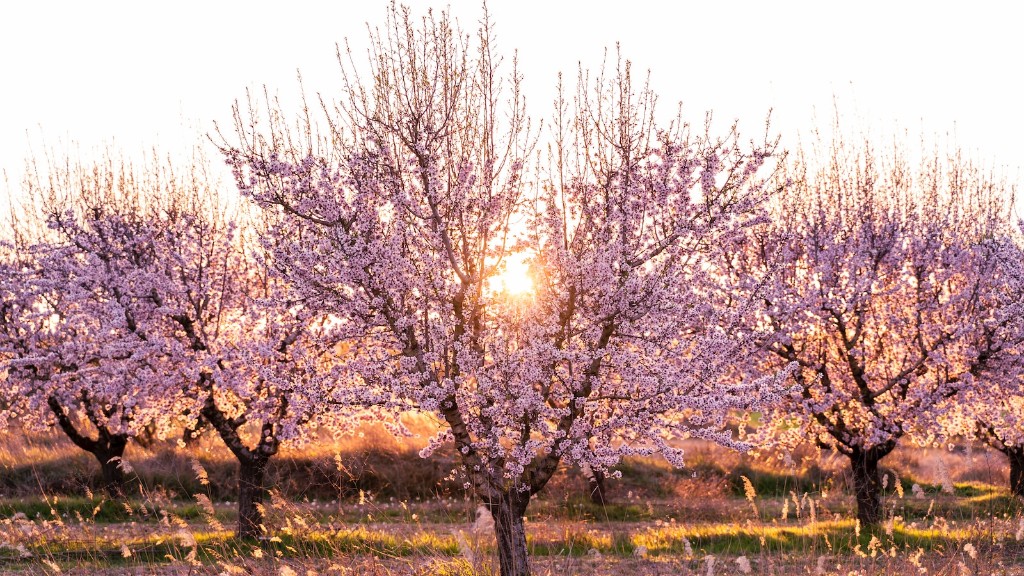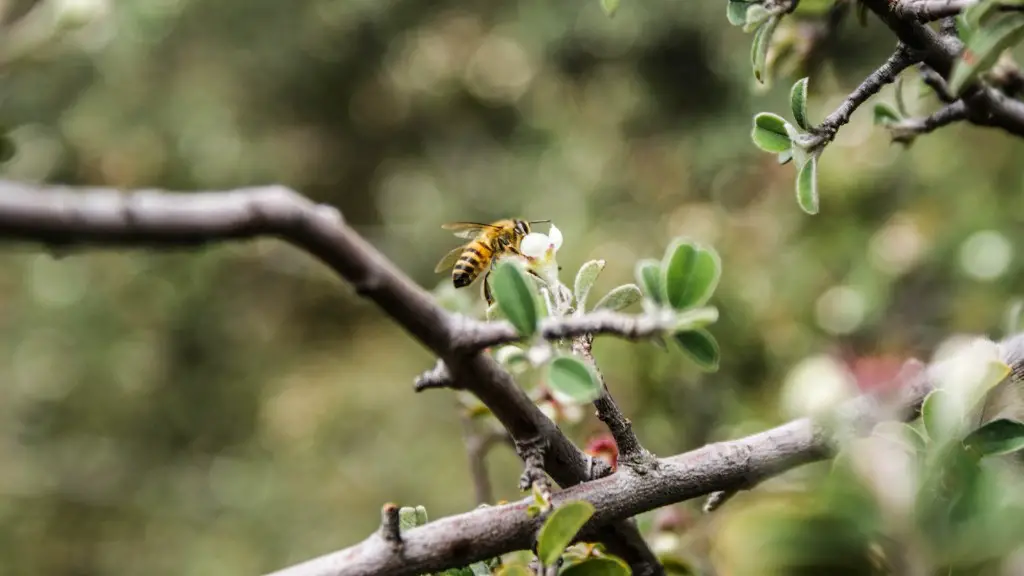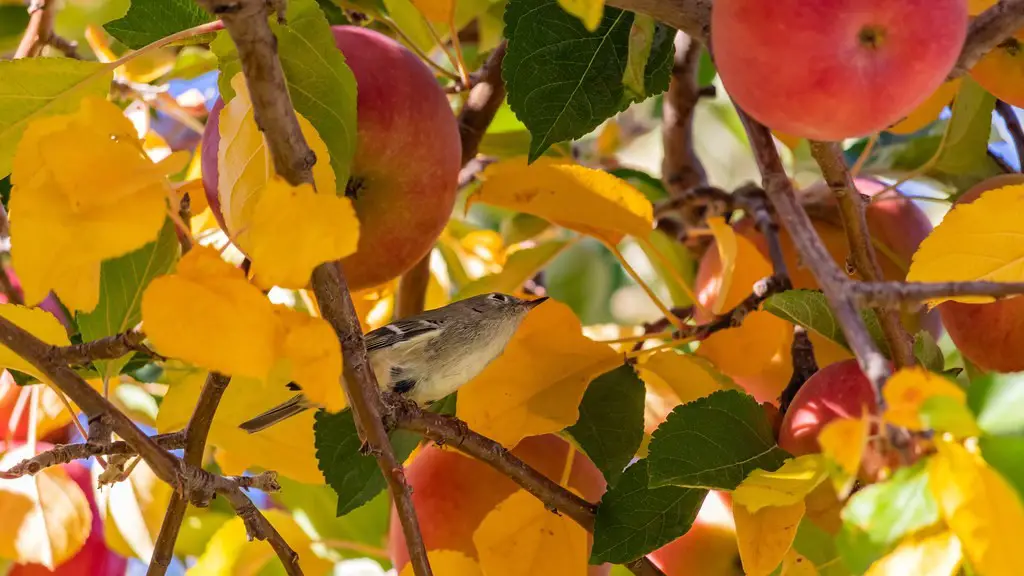Identifying Cherry Tree Leaf Spot
Cherry tree leaf spot is a fungal disease characterized by circular spots on the leaves of cherry trees, which may appear yellow, brown, or black. The spots are caused by a fungus called Blumeriella jaapii. These spots often form a distinct pattern on the leaves, with concentric circles radiating from a single point where the spores of the fungus were released. The spots may be accompanied by leaf yellowing and leaf drop, which can cause the tree to look unattractive and even diminish its fruit production.
Understanding The Fungus
Blumeriella jaapii is an obligate parasite, meaning it requires a living host in order to survive and reproduce, in this case the leaves of cherry trees. The fungus enters the tree through its pores, where it begins to secrete enzymes that digest the cells and move through the leaves, producing the characteristic spots. The fungus spreads via airborne spores, which can be transferred from one tree to another by wind, rain, or through contact with infected material, such as pruned branches or leaves. Additionally, the fungus can overwinter in the infected leaves, allowing it to spread rapidly in the spring.
Managing The Fungus
The best way to manage cherry tree leaf spot is through preventative measures. Pruning affected branches and discarding infected leaves can help to reduce the risk of spread. Additionally, planting cherry trees in well-draining, sunny locations can help to encourage their health and growth. Adequate irrigation and fertilization can also help to strengthen and protect the trees against this type of fungal attack.
When cherry tree leaf spot is present, fungicides can be used to reduce the spread and severity of the disease. Many fungicides are available on the market, but it is important to select one that is labeled for use on fruit trees. Additionally, fungicides should be applied at the start of the growing season, as the spores are most active when the weather is warmer. Finally, homeowners should be sure to carefully follow the directions on the product label in order to ensure its safe and effective use.
Chemical-Free Options
When used carefully and properly, fungicides can be highly effective in managing cherry tree leaf spot. However, some homeowners may prefer to use chemical-free alternatives. In this case, natural methods such as crop rotation and increasing air circulation around the affected trees may help to reduce the spread of the fungus. Additionally, some organic fungicides, such as products containing sulfur or neem oil, may also be used.
The Effects Of Leaf Spot
In severe cases, cherry tree leaf spot can cause premature leaf drop and defoliation. This can affect the aesthetics of the tree and can reduce the amount of fruit produced. Additionally, the presence of the fungus can weaken the tree, leaving it more susceptible to other pests and diseases.
ImprovingTreeHealth
In addition to managing the fungus, homeowners should take steps to improve the overall health of their cherry trees. This can include fertilizing the trees regularly and pruning to promote good air circulation. Additionally, mulching around the trees can help to retain valuable moisture and nutrients. Finally, installing shelters or screens can also help to prevent the fungus from spreading to nearby trees.
Monitoring The Tree’s Health
Homeowners should take the time to regularly monitor their cherry trees for signs of leaf spot. This includes checking the leaves for circular spots or yellowing and watching for defoliation or premature leaf drop. If leaf spot is detected, homeowners should take the necessary steps to manage the fungus and protect the health of their trees.
Methods of Monitoring
Monitoring cherry trees for leaf spot can be done at home by carefully inspecting the leaves. Additionally, homeowners can also purchase a leaf spot test kit, which will allow them to test for the presence of the fungus in the soil. For larger or more commercial orchards, however, professional testing may be necessary.
The Cost Of Diagnosis
For homeowners, the cost of purchasing a leaf spot test kit is likely to be minimal. However, for larger orchards and commercial growers, professional testing can be quite expensive. Additionally, the cost of chemical treatments for managing the fungus can also be quite costly.
Organic Solutions
Organic solutions, such as crop rotation and natural fungicides, may be highly effective in managing cherry tree leaf spot. Additionally, these solutions are also often much more cost-effective than chemical treatments. Organic solutions can also help to promote the health of cherry trees in the long-term, ensuring they are more resistant to this type of fungal attack.
Pest Control
In addition to monitoring for leaf spot, homeowners should also take steps to protect their trees from other pests and diseases. This includes inspecting trees regularly for signs of infestation and taking steps to reduce the risk of pests, such as by removing fallen fruit or debris from around the tree. Additionally, chemical sprays or baits may also be used to control or eliminate pest populations.
Vulnerable Trees
The most vulnerable trees are those that are weakened or stressed due to drought, poor soil conditions, or other environmental factors. These trees are more likely to become infected with leaf spot and should be monitored more closely to ensure they do not become overly damaged.
Cultural Practices
Cultural practices, such as increasing air circulation and pruning, can also help to reduce the risk of cherry tree leaf spot. Additionally, these practices can help to promote the overall health of the trees, which can also help to reduce the risk of fungal attack.



